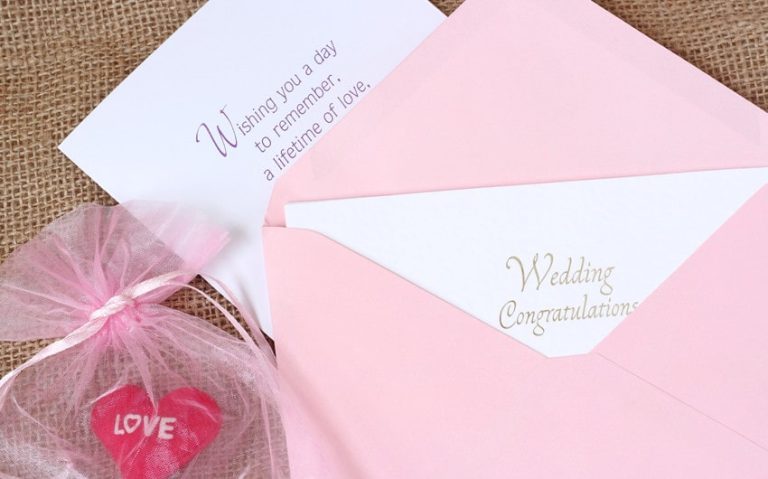Saying I Love You in Morse Code: A Step-by-Step Guide
Love has always found creative ways to be expressed, from handwritten letters to sweet texts. If you’re looking for a unique and meaningful way to tell someone how much they mean to you, why not use a secret code?
Morse code, once used for long-distance communication, is now a fun and thoughtful way to share messages with your loved ones. Whether it’s for a gift, a special moment, or just because, learning how to say “I love you” in Morse code adds a personal touch to your expression of love.
How to Say I Love You in Morse Code

Saying “I love you” in Morse code is both simple and meaningful. Morse code is made up of a combination of dots (short signals) and dashes (long signals) that represent different letters and numbers. Here’s the breakdown for each letter in “I love you”:
- I = “..” (dot, dot)
- L = “.-..” (dot, dash, dot, dot)
- O = “—” (dash, dash, dash)
- V = “…-” (dot, dot, dot, dash)
- E = “.” (dot)
- Y = “-.–” (dash, dot, dash, dash)
- O = “—” (dash, dash, dash)
- U = “..-” (dot, dot, dash)
Once you’ve learned this, you can tap it out using knocks, send it via lights (a flashlight works perfectly), or even write it out with dots and dashes on paper. It’s a thoughtful way to add a hidden layer of meaning to your message.
Creative Ways to Share I Love You in Morse Code
There are plenty of creative ways to surprise your loved ones with Morse code messages, turning a simple “I love you” into a special and memorable gesture. Here are some fun ideas:
1. Morse Code Jewelry
Morse code jewelry, like necklaces or bracelets, subtly spells out “I love you” using beads or bars to represent dots and dashes. It’s a stylish, secret message that only you and the recipient understand. You can customize it with materials like silver, gold, or even birthstones, making the gift both meaningful and personal for special occasions like anniversaries or Valentine’s Day.
2. Morse Code Gifts
Personalize everyday items like mugs, t-shirts, or keychains by incorporating “I love you” in Morse code. These hidden messages add a fun, thoughtful touch to common gifts, turning them into something memorable. Whether engraved or printed, these gifts can be a creative way to celebrate a special moment or just show your affection through a unique and interactive design.
3. Handwritten Notes or Cards
Including “I love you” in Morse code on a handwritten note or card adds an intriguing, playful element. Your partner can enjoy decoding the message, making it more than just a typical note. This is perfect for special occasions, such as anniversaries or birthdays, where a little extra thought goes a long way. You can add illustrations or colors to make the note even more engaging.
4. Texting Morse Code
Send “I love you” in Morse code over text by typing out the dots and dashes. This playful message, such as “.. / .-.. — …- . / -.– — ..-,” lets you communicate affection in a fun, secretive way. It adds a bit of mystery and excitement to your daily conversations, especially if you challenge your partner to decode it or send back their own Morse code reply.
5. Flashlight Morse Code
Use a flashlight to send “I love you” in Morse code, flashing short and long bursts for the dots and dashes. This is a fun, interactive way to express your feelings, especially outdoors or during a quiet evening together. It’s a playful, adventurous way to connect, perfect for couples who enjoy spontaneous moments or outdoor activities like camping or stargazing.
6. DIY Morse Code Art
Create a piece of art featuring the Morse code for “I love you.” Using materials like paint, embroidery, or wood burning, you can design a decorative wall piece that’s both personal and meaningful. This type of DIY project makes for a thoughtful, handmade gift or a special addition to your home, adding a unique, heartfelt message that can be cherished every day.
Why Express Love Through Morse Code?

Expressing love through Morse code adds an element of mystery and creativity to a message that’s been said countless times. In a world where technology has made communication quick and easy, using Morse code to say “I love you” feels like a return to something more thoughtful and personal.
It’s not just the words themselves, but the effort and intention behind them that makes it special. Morse code takes time to learn and decode, which shows a deeper level of care and thoughtfulness for the recipient.
Additionally, Morse code has historical significance, originally used to send important messages across long distances. Incorporating it into your expressions of love can symbolize how deeply and intentionally your words are meant.
It’s also a great way to share something meaningful and unique, especially if you’re looking to step away from more conventional expressions of love. By using Morse code, you’re creating a secret language between you and your loved one, adding an intimate and playful layer to your relationship.
How to Say Other Romantic Messages in Morse Code
While “I love you” is a classic, there are many other romantic messages you can express through Morse code. Learning how to say a variety of sweet phrases can help keep your relationship exciting and meaningful. Here are a few more romantic messages in Morse code:
1. “You Are My World”
- You = “-.– — ..-” (dash, dot, dash, dash | dash, dash, dash | dot, dot, dash)
- Are = “.- .-. .” (dot, dash | dot, dash, dot | dot)
- My = “– -.–” (dash, dash | dash, dot, dash, dash)
- World = “.– — .-. .-.. -..” (dot, dash, dash | dash, dash, dash | dot, dash, dot | dot, dash, dot, dot | dash, dot, dot)
2. “Forever and Always”
- Forever = “..-. — .-. . …- . .-.” (dot, dot, dash, dot | dash, dash, dash | dot, dash, dot | dot | dot, dot, dot, dash | dot | dot, dash, dot)
- And = “.- -. -..” (dot, dash | dash, dot | dash, dot, dot)
- Always = “.- .-.. .– .- -.– …” (dot, dash | dot, dash, dot, dot | dot, dash, dash | dot, dash | dash, dot, dash, dash | dot, dot, dot)
3. “You Complete Me”
- You = “-.– — ..-” (dash, dot, dash, dash | dash, dash, dash | dot, dot, dash)
- Complete = “-.-. — — .–. .-.. . – .” (dash, dot, dash, dot | dash, dash, dash | dash, dash | dot, dash, dash, dot | dot, dash, dot, dot | dot | dash | dot)
- Me = “– .” (dash, dash | dot)
4. “You Are Beautiful”
- You = “-.– — ..-” (dash, dot, dash, dash | dash, dash, dash | dot, dot, dash)
- Are = “.- .-. .” (dot, dash | dot, dash, dot | dot)
- Beautiful = “-… . .- ..- – .. ..-. ..- .-..” (dash, dot, dot, dot | dot | dot, dash | dot, dash | dash | dot, dot | dot, dot, dash | dot, dot, dash | dot, dash, dot, dot)
5. “Together Forever”
- Together = “- — –. . – …. . .-.” (dash | dash, dash, dash | dash, dot, dot | dot | dash | dot, dash | dot, dot, dot)
- Forever = “..-. — .-. . …- . .-.” (dot, dot, dash, dot | dash, dash, dash | dot, dash, dot | dot | dot, dot, dot, dash | dot | dot, dash, dot)
6. “You Mean Everything to Me”
- You = “-.– — ..-” (dash, dot, dash, dash | dash, dash, dash | dot, dot, dash)
- Mean = “– . .- -. (dash, dash | dot | dot, dash | dash, dot)
- Everything = “. …- . .-. -.– – …. .. -. –.” (dot | dot, dot, dot, dash | dot | dot, dash, dot | dash, dot, dash, dash | dash | dash, dash, dot, dot | dot, dot)
- To = “- —” (dash | dash, dash, dash)
- Me = “– .” (dash, dash | dot)
7. “Love You to the Moon and Back”
- Love = “.-.. — …- .” (dot, dash, dot, dot | dash, dash, dash | dot, dot, dot, dash | dot)
- You = “-.– — ..-” (dash, dot, dash, dash | dash, dash, dash | dot, dot, dash)
- To = “- —” (dash | dash, dash, dash)
- The = “- …. .” (dash | dash, dash, dash, dash | dot)
- Moon = “– — — -.” (dash, dash | dash, dash, dash | dash, dash, dash | dash, dot)
- And = “.- -. -..” (dot, dash | dash, dot | dash, dot, dot)
- Back = “-… .- -.-. -.-” (dash, dot, dot, dot | dot, dash | dash, dot, dash, dot | dash, dot, dash)







